We saw so much on this trip through Yucatan. Nick already wrote about Valladolid and Izamal, the small towns we very much enjoyed, and we also visited two of the best known Mayan ruins: Chichen Itza and Uxmal.
In the souvenir shops in Playa del Carmen and Isla Mujeres we have seen endless rows of plastic pyramids and colourful skulls. Now having seen these ancient Mayan ruins and learnt about the history we have a better understanding of the meanings of these symbols.

Chichen Itza and Uxmal were two of the most important cities during the period from 250-1100BC. This period was the height of the Maya civilisation in which they perfected the Maya script, mathematics and astronomy models, architecture and the renowned Maya calendar.

The Ancient Mayans had many religious rituals and ceremonies including human sacrifice. Although we learned that the sacrifices were not done on the pyramids, in the case of Chichen Itza there was a statue on top of the Temple of Warriors which may have been used.

The pyramids were built to symbolise Witzob, the great mountain of the Maya gods. At Chichen Itza the architecture of El Castillo is full of symbolism, particularly with reference to the Mayan calendar. The four stairways leading up to the central platform each have 91 steps, making a total of 364; added to the central platform this equals the 365 days of the solar year.
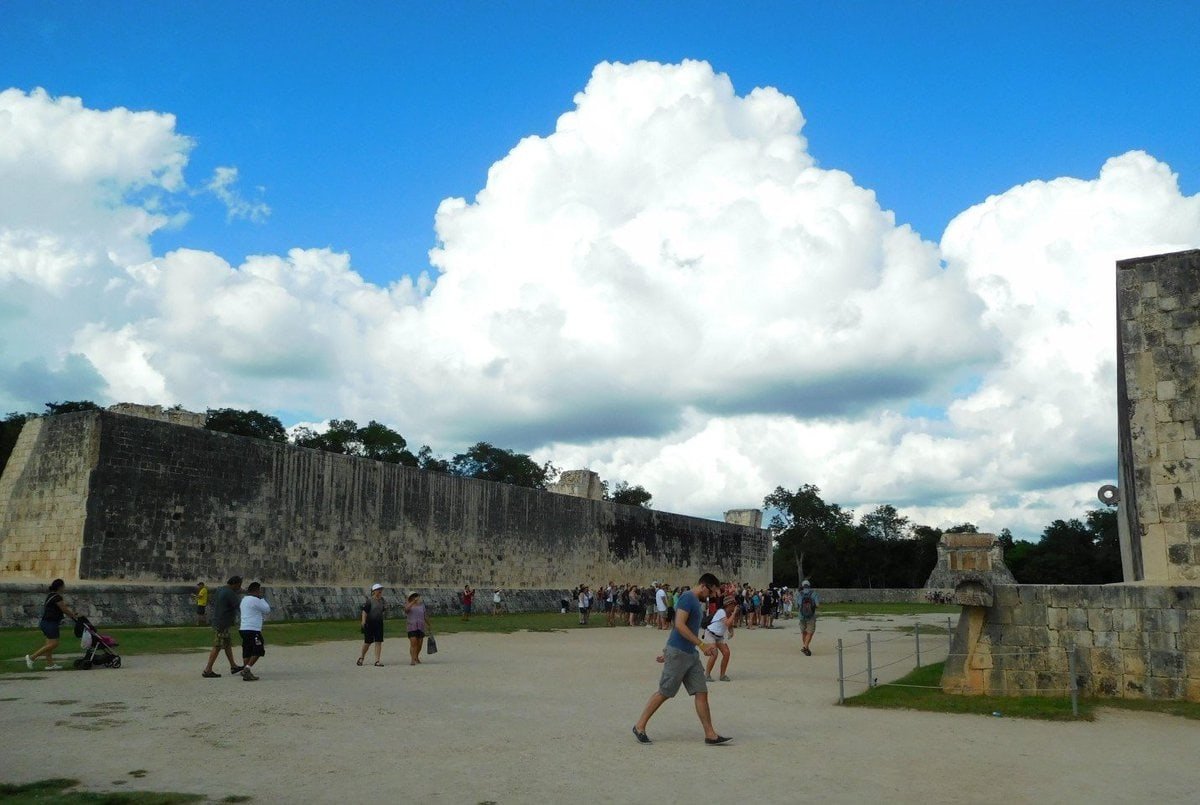
The ball court was used to play Pok-a-Tok, a game where two teams would try to get a small rubber ball through the hoop attached to the wall (upto 6 metres above the ground). What makes the game very different from football is that players could not use their hands or feet, only the hips, shoulders, head and knees. The game was deeply meaningful to the Maya and would be used to settle conflicts, sometimes resulting in one of the team leaders being sacrificed at the end.
Carvings on both walls show ball players decked out in heavy protective gear and there is also a headless player kneeling with blood shooting from his neck, while another player holding the head looks on.

The Platform of the Skulls is named for the rows of skulls carved into the stone platform, which represent the heads of sacrificial victims.

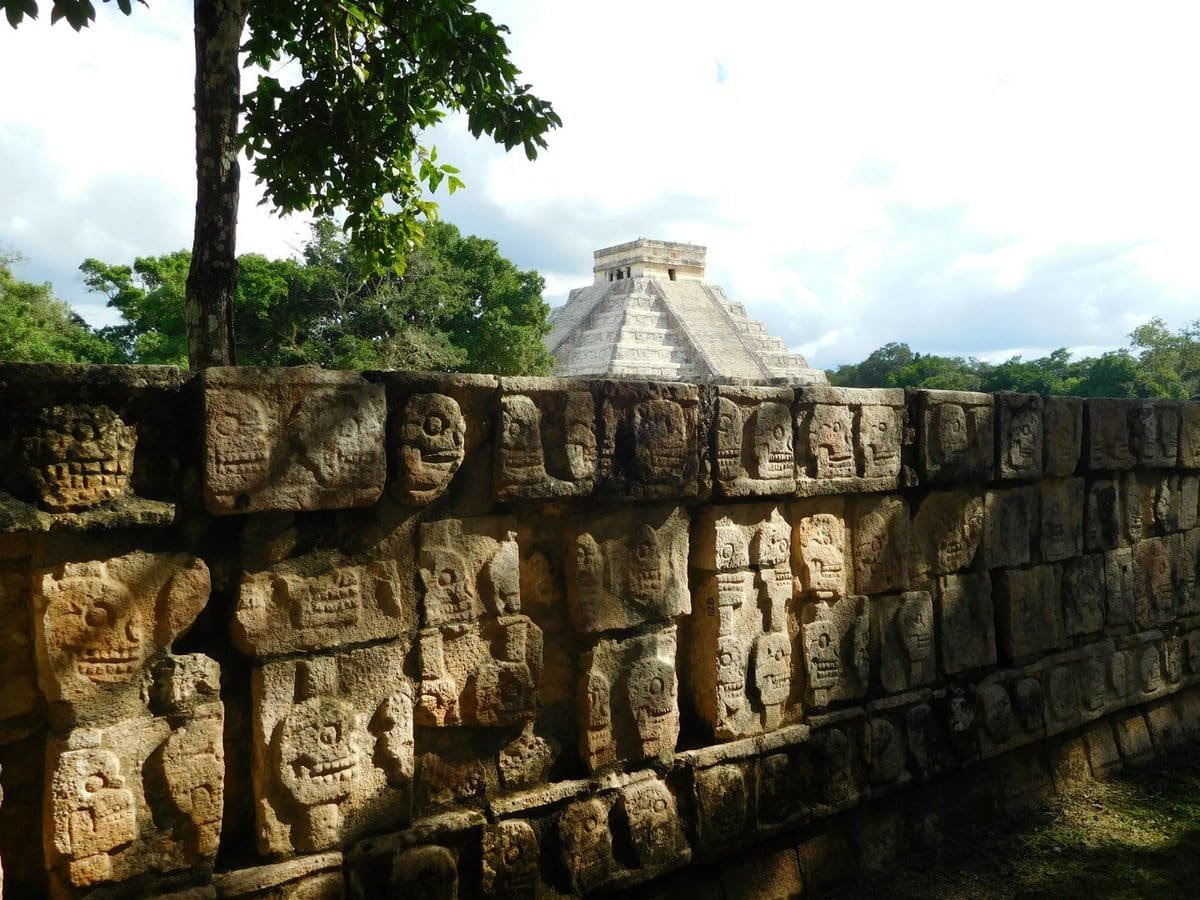
Uxmal
Surrounded by jungle, the ruins of Uxmal are located closer to the Gulf of Mexico on the west side of the peninsula. We stopped there on our way towards Campeche a few days later.
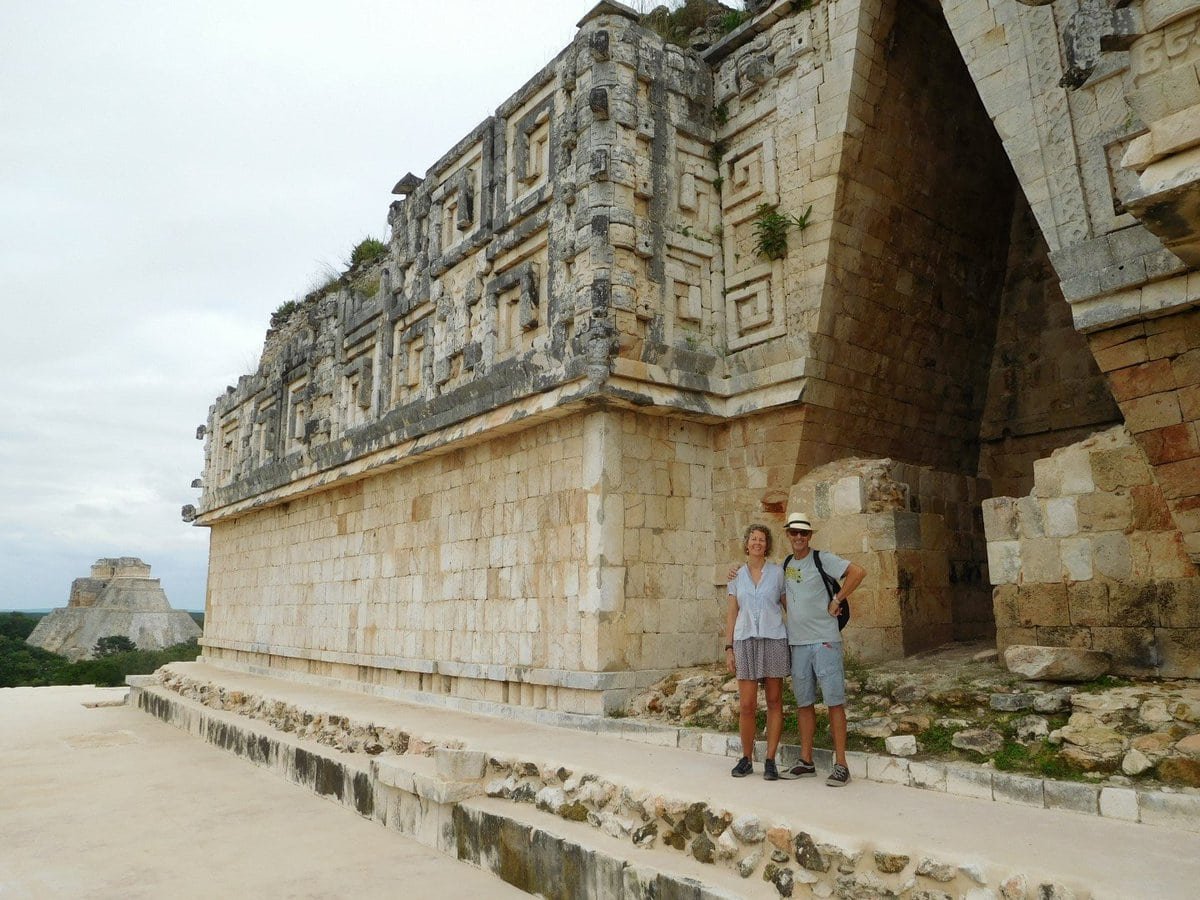
Chichen Itza is very impressive and is seen as one of the ‘7 New Wonders of the World’, however we found visiting Uxmal more enjoyable. The layout and the fact that you can climb a couple of the structures makes it easier to get a feel of the old city and there were less visitors and souvenir vendors so the whole experience was more peaceful.


The stonework on most walls at Uxmal is very intricate with carvings and patterns. Many are of Chaac, the Rain God as this area was plagued by drought.
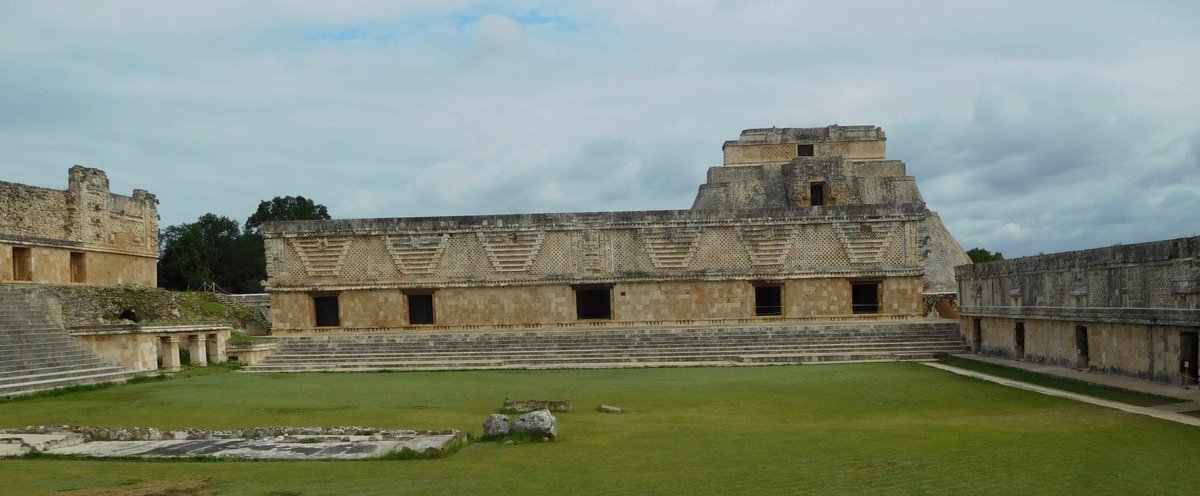
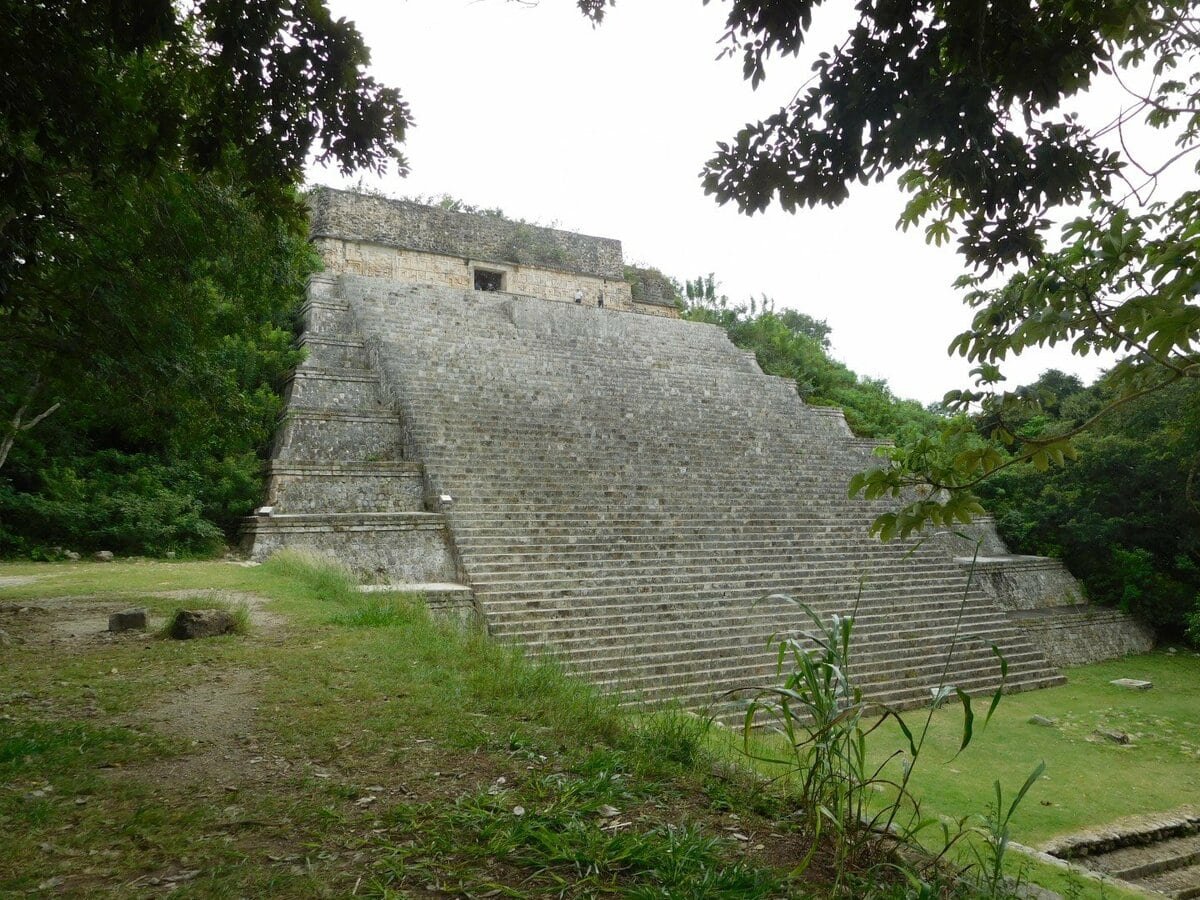

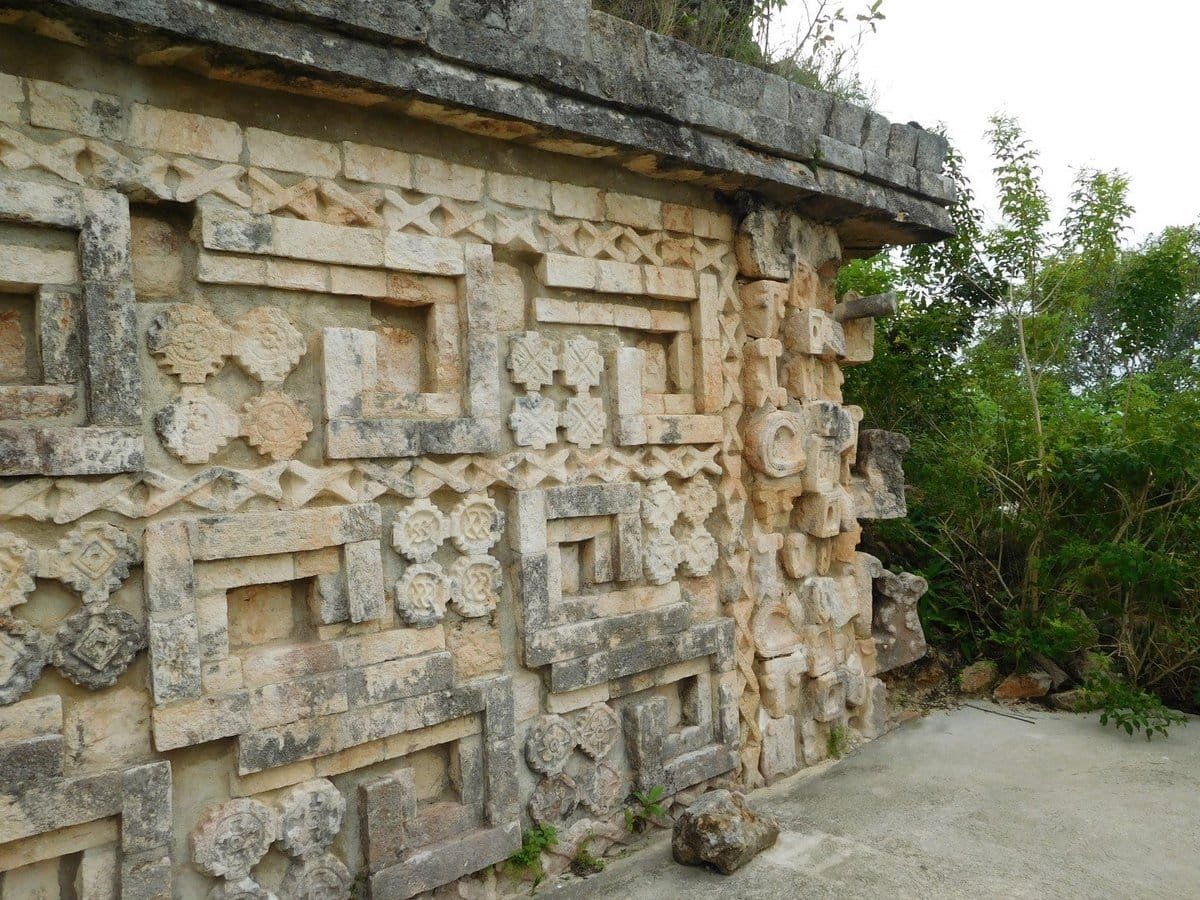
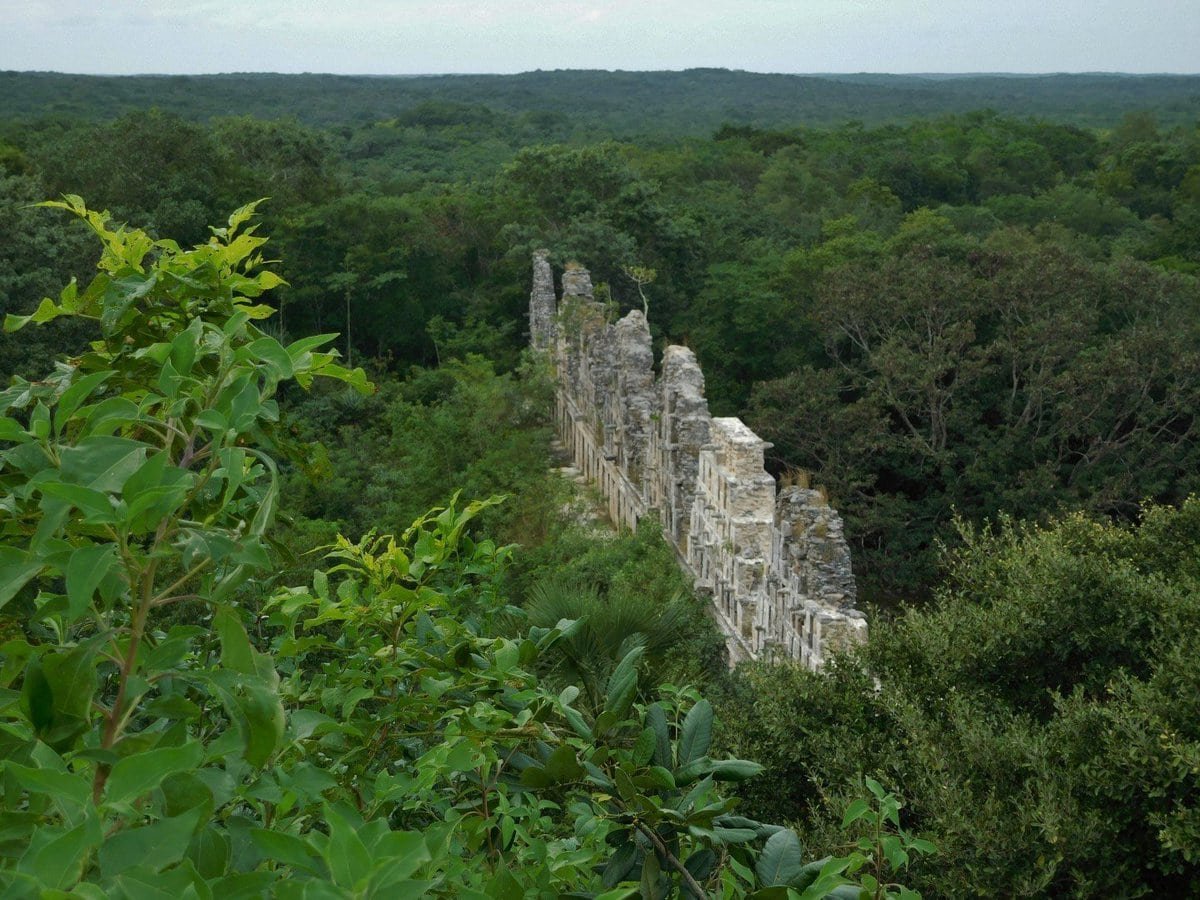
The Maya are still the indigenous people on the Yucatan peninsula. Although they deserted these cities, the Maya people still live here and in many of the smaller towns like Izamal which we visited, people still speak Maya, not Spanish, as their main language

Gorgeous photos from our gorgeous adventurers.
Marlene – those stairs look just the ticket for my ‘soooo past inactive, let’s now call them comatose’ glutes!
We miss you guys.
E.x